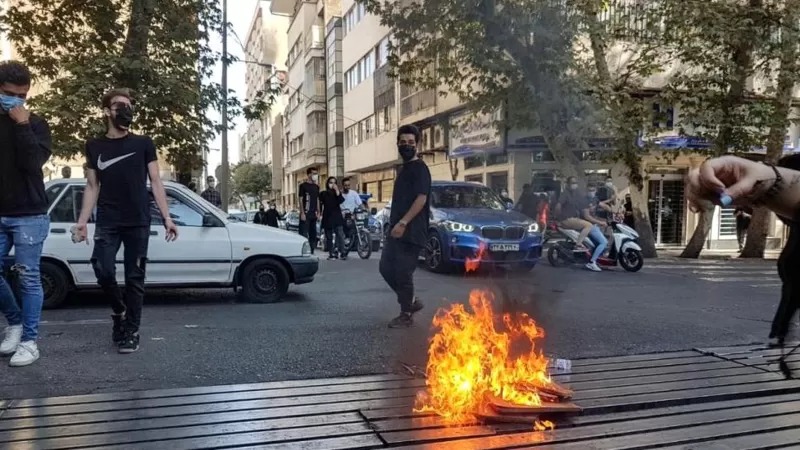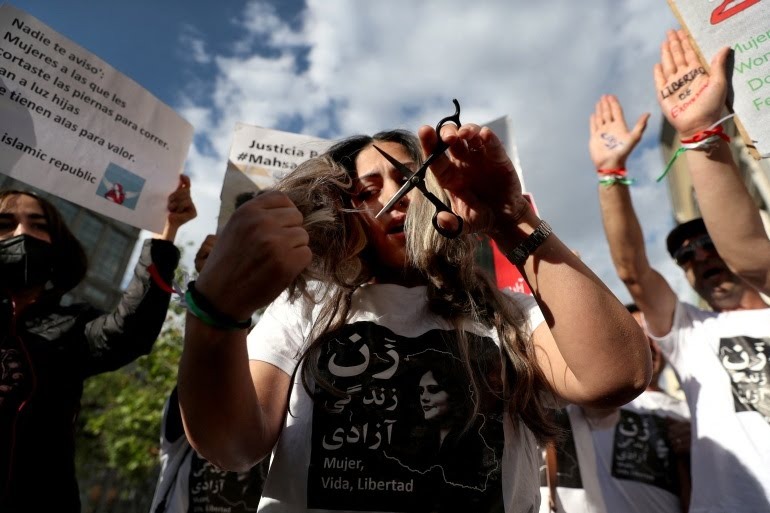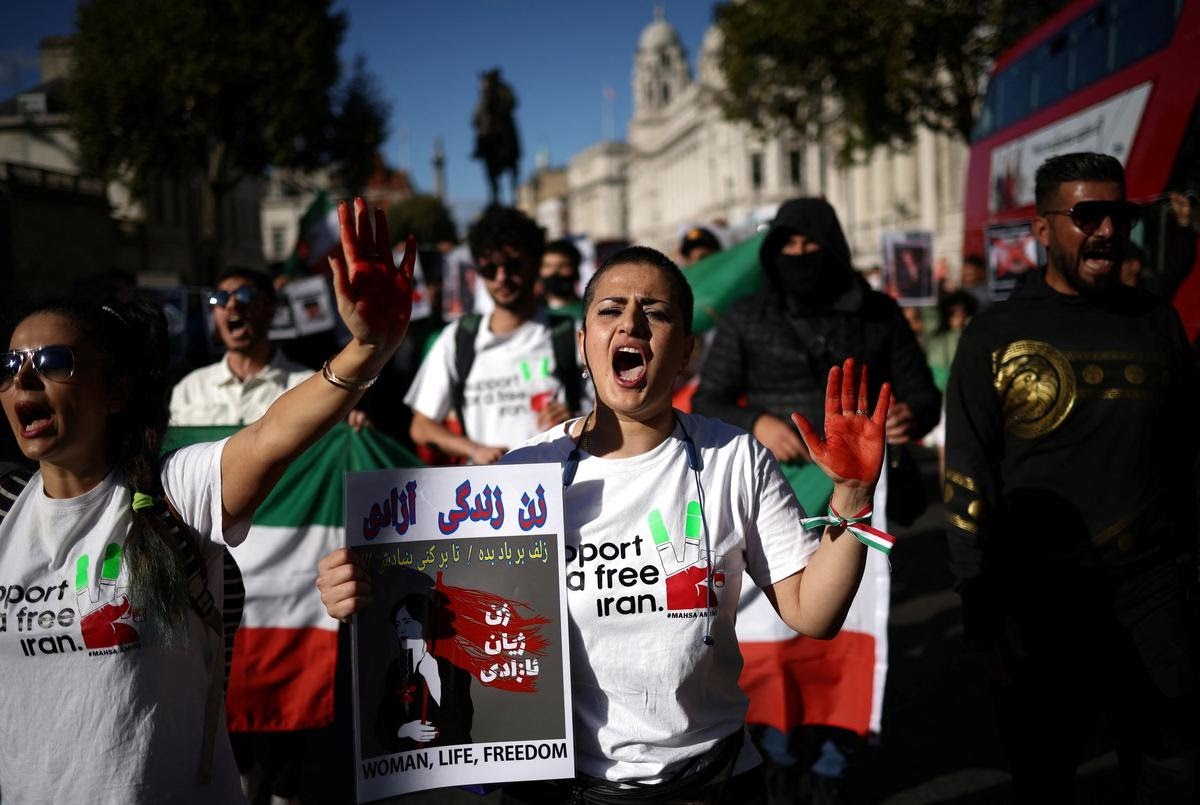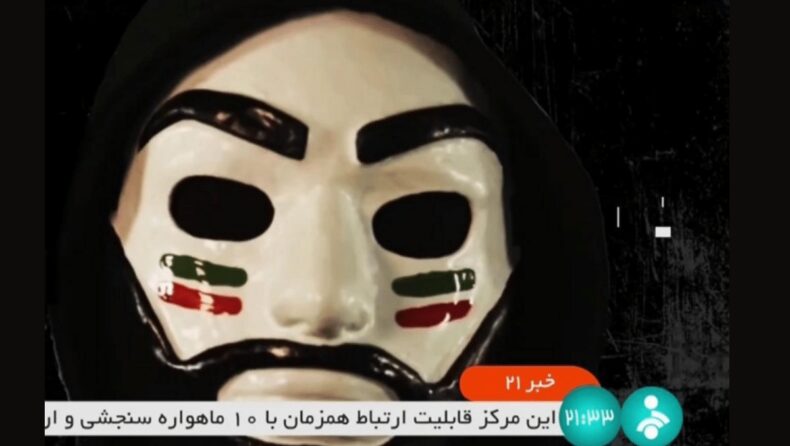On Saturday, protestors hacked into Iran’s state-run television during a live broadcast, interrupting the programme to show an anti-government message amidst continuous protests raging across Iran.
It comes after further unrest following the custodial death of Mahsa Amini resulted in at least three individuals being killed when protesters and security forces clashed. An unparalleled spurt of protests around Iran had been provoked by her death.
The anger brought on by Mahsa Amini’s death has given rise to a widespread outcry against the oppressive regime of Ayatollah Khamenei. The upheaval has provided thousands of individuals with a stage to speak out against a number of other pressing concerns as well, such as inflation, unemployment, and violations of international law.
Since he controls substantially all of Iran, such acts of defiance against Ayatollah Ali Khamenei remain historically uncommon. However, there has been a great deal of open dissatisfaction since Ms Amini’s passing.
Iran: Protesters hack State-run TV as anti-government sentiments surge

The largest challenge to Iran’s clerical leaders in years has emerged from anti-government demonstrations that started in September. Protesters are clamouring for the overthrow of Supreme Leader Ayatollah Ali Khamenei.
As per CNN, anti-revolutionary elements briefly hacked the Islamic Republic of Iran News Network’s (IRINN) 9 p.m. newscast, which is produced by Islamic Republic of Iran Broadcasting (IRIB), as reported by Iran’s semi-official Tasnim News Agency.
The event reportedly occurred while Supreme Leader Ayatollah Ali Khamenei was present at a meeting in the southern city of Bushehr, according to the pro-reform IranWire publication, which published a clip of the incident.IRIB/IRINN services were interrupted by a clip of a cartoonish face with a beard and thick brows on a black background, as seen in the incident’s now-viral film, according to CNN.
https://www.bbc.com/news/av-embeds/world-middle-east-63188795/vpid/p0d5ntyt
After the video of the mask, there was a screen with images of four young ladies who had just recently died in Iran: Mahsa Amini, Sarina Esmailzadeh, Nika Shahkarami and Hadis Najafiand coupled with a picture of Khamenei with a target overlaid on his face.

After being arrested by the morality police, Amini, 22, passed away. The resistance movement that has emerged since Amini’s death claimed the lives of the remaining three, two of whom were only teenagers.
The words “Join us and rise up” and “The blood of our youth is gushing from your grip” appeared next to the images on the screen, as well as the social media addresses for the hacker organisation Edaalat-e Ali, which is short for Ali’s Justice, according to CNN. The picture remained on the screen for a while.
According to CNN, Edaalat-e Ali appeared to claim responsibility for the hacking when they posted the video clip to their social media account along with the statement, “On the people’s request, we fulfilled our pledge and accomplished the unthinkable to free Iran.”
Iran: Anti-government protests sweep throughout the country
“At least 185 people, including at least 19 children, have been killed in the nationwide protests across Iran. The highest number of killings occurred in Sistan and Baluchistan province with half the recorded number,”
the Norway-based Iran Human Rights announced on Saturday.

Iran has been engulfed in nationwide protests for weeks after the death of Amini, who was detained by the government’s morality police for ostensibly not donning her hijab properly before being killed. Authorities and protesters have engaged in violent battles since her death, that are now raging in 40 provinces and which have reportedly resulted in scores of fatalities.
The number of fatalities vary since the protests began and have been reported by international human rights organisations, the government, local journalists and opposition organisations.
Security personnel in Iran have brutally put down protesters that were storming against the death of Mahsa Amini. Amini has since become a symbol for thousands of Iranian women whose lives are morally policed and regulated by the state’s harsh rules that rob them of their personal liberty. Women have since then led the protests, and have taken to the streets with widespread demonstrations revealing women publicly burning their hijab and cutting their hair.
Three-fold anger against the government continues to rage in the protests –continual state repression and Kurdish resistance, deteriorating economic conditions due to international sanctions followed by poverty and a history of dismissing women’s rights activism.

For a very long time, the collaborative politics of religion and power have led to a crisis of individuality and the absence of personal freedom for women in Iran. The Iranian state with its rigorous restrictions concerning religion and social life has transgressed the boundaries of what constitutes personal and what falls in the domain of the public. The endless surveillance and state repression of the Iranian regime have forced millions of people to protest for their fundamental right to freedom.
Many others sliced their hair down while being recorded as an act of solidarity, driven by the magnitude of the discontent that was caused by oppression, inequality, and patriarchy.
According to rights organisations, since the Islamic Republic’s protests began in earnest on September 17, as many as 150 people have died.

Schoolgirls chant protest songs, workers join on strike, and violent confrontations erupt all over Iran as Mahsa Amini’s murder rallies reached their fourth week despite a brutal crackdown and the protesters’ determination continues to grow stronger. Shops have closed in solidarity with the demonstrators at several locations, including Tehran’s bazaar, where some of the protesters set flame to a police kiosk and hastened away the security personnel.
These women-led protests have persisted for 21 straight nights even as the state continues to deploy deadly force to curb protesters, according to videos that AFP has confirmed. Despite internet restrictions intended to prevent protests and the dissemination of photographs of the crackdown, protestors have developed new strategies to spread their message.













